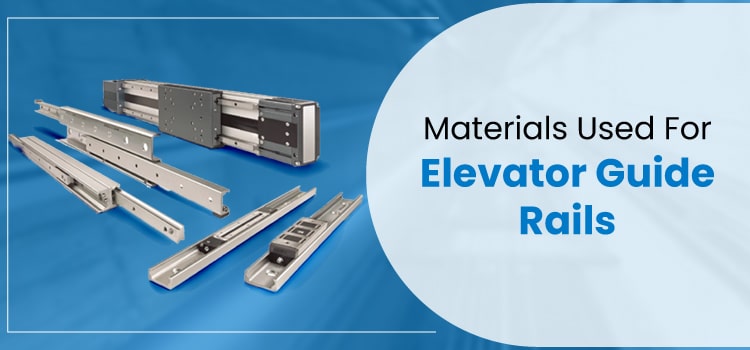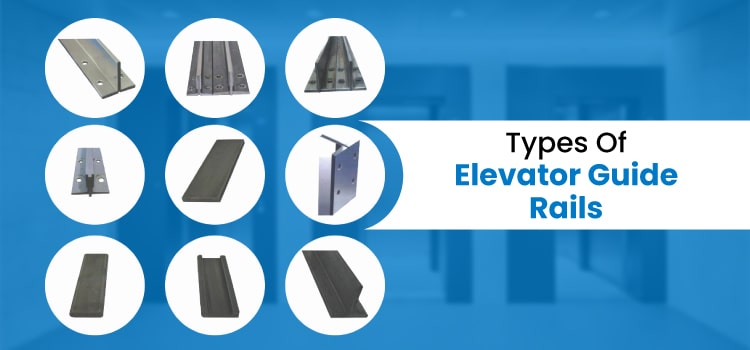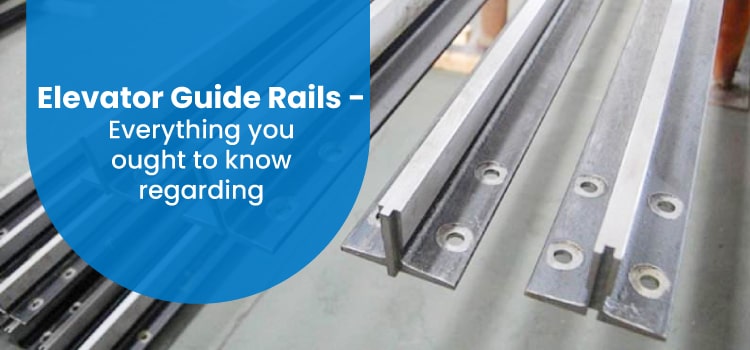Elevator Guide Rails – Everything you need to know
In today’s modern world, elevators are essential for seamless transportation within tall buildings. But, with the evolution of technology, guide rails ensure the smooth operation of lifts. Many experts design these from durable materials to bear the load of numerous individuals. Additionally, it guides the lift’s car when it ascends or descends across the building’s height.
However, do you really know which type of guide rail is ideal? Well, if that isn’t the case, then scroll through this article. This article covers more about elevator guide rails and how to choose them.
What Are Elevator Guide Rails?
When you come across elevator guide rails, these are essential components of lifts. They allow the elevator to move smoothly and safely. While the components ensure precise motion of the elevator’s car, they offer a route. Additionally, they align the car with the doors for proper functioning. Most of the time, these parts are made from different materials which are durable in nature. As far as the shape is concerned, they are in the form of a T-shape.
Key Components of Elevator Guide Rails
Now, let’s check out the different components of elevator guide rails.
- Vertical Guide Rails
These rails are the primary components of the guide rails. They offer a certain route for the car to move in the downward or upward direction. Hence, when individuals are ascending or descending, the lift functions smoothly.
- Brackets
Such types of elevator parts are used to attach the guide rails to the shaft walls. Once these are placed in a fixed position, they offer structural support. They also ensure alignment when the elevator is running.
- Car Roller Guides
Among the main components of an elevator, these are installed on the lift’s car. As they work in sync with the guide rails, they offer stability. So, people will not feel uneasy when they are moving across different heights.
- Counterweight Guide Rails
Synonymous to the car guide rails, these support the counterweight. Thus, the components balance the elevator’s car and increase its efficiency.
- Lubrication System
Some elevators have a lubrication system that minimizes friction. This friction can occur between the guide rails and the rollers. Therefore, you can perceive smooth operation even when the elevator is working for a long time.
Materials Used for Elevator Guide Rails

Elevator guide rails are made from various materials. Here is the list of materials used for the construction of the rails.
- Steel – This material is commonly used and it offers high strength. So, when they are used, they support heavy loads. They are also resistant to relentless wear and tear.
- Aluminum – Even though this material is lighter than steel, it’s used in case of lower-capacity elevators. Besides being corrosion resistant, Aluminium rails are also easier to install.
- Composite Materials – In some types of elevators, composite materials are used for specialized rails. While these are strong, they also enhance the resistance to many environmental factors.
- Plastic / Polymeric Materials – Elevator manufacturers may use plastic or polymeric materials for certain rails. You will come across this material when the elevators have to sustain a low load. With the use of this material, the friction within the elevator is also reduced.
Types of Elevator Guide Rails

Elevator guide rails are available in diverse types. But, such components are designed for certain applications and configurations. Let’s check the types one after the other.
- Flat Guide Rails
Such rails are commonly used in traction elevators. While these offer a flat surface for the car, they ensure stability. Besides, the rails also enable the lift to work smoothly.
- T-shaped Guide Rails
These rails have a T-shaped cross-section. So, when the rails are set up, they offer greater rigidity and support. Large elevators also use these often.
- U-shaped Guide Rails
When you observe hydraulic lifts, these rails have a U-shaped profile. Apart from guiding the elevator car, they also offer additional support.
- Box Rails
As it is obvious from the name, these feature a box-like design. While these offer enhanced strength, they are ideal for heavy-duty applications.
- Specialty Guide Rails
Such types of rails are designed for certain elevators only. You will find these rails in elevators that are installed in high-rise buildings. The rails are also used in lifts set up in buildings that boast a unique architectural style.
Factors to Consider When Choosing Elevator Guide Rails
Many factors can help selecting guide rails for an elevator. Here are some of the considerations.
- Load Capacity
It’s always important to assess the maximum load an elevator can sustain. This will help to select the guide rails that can safely support the car’s weight.
- Elevator Type
Certain kinds of guide rails are needed for various lifts. So, it’s essential to check whether the rails are compatible with the elevator. You should consider the factor for efficient operation of the lift. - Alignment and Installation
During installation, ensure that the guide rails are installed properly. These have to work well with the main components of an elevator. In case there’s any misalignment, then it can be a cause for operational issues. If it’s required, you can insist the workers make some adjustments.
- Safety Standards
Always ensure that the guide rails comply with safety codes. These are the ones that have been set by the local building authorities.
- Noise Levels
Before opting for the guide rails, check the noise that’s generated. Some designs can lead to quieter performance. So, these are useful for lifts in residential and commercial complexes.
Installation and Maintenance of Guide Rails
There are several things that you have to consider while installing guide rails for an elevator. Let’s check these in depth.
- Rail Alignment
Soon after site preparation, you must mark the position of the guide rails. With precise measuring tools, you can ensure accurate alignment. Eventually, the rails should be parallelly placed to prevent misalignment.
- Mounting Brackets
As per the guidelines, you also have to secure the mounting brackets. These have to be attached to the shaft walls at certain points. The brackets also have to be placed firmly to sustain the load.
- Rail Attachment
Now, the guide rails have to be attached to the mounted brackets. To ensure perfect alignment, you have to use shims. Fasteners also have to be made tight according to the specifications.
- Counterweight and car installation
At this step, the roller guides are installed on the elevator car and the counterweight. Adjustments are also made to ensure precise alignment.
Subsequently, the elevator is inspected thoroughly and is tested as well. Conducting a test can later confirm whether the lift is functioning smoothly.
Ultimately, when it’s time to maintain the guide rails for an elevator, ensure to keep them clean. Regular maintenance can prevent buildup that can wear out the roller guides. Moreover, proper lubrication can also reduce friction and increase the lifespan of the components. Checking the alignment periodically can also mitigate some issues. If certain components are damaged, then it’s better to replace the parts promptly. In the end, a detailed record of inspections has to be maintained. Documents need to be maintained for future reference. They also ensure compliance with safety standards.
Conclusion
Finally, if you’re seeking supreme quality guide rails, then how about connecting with MAS Industries in India? While the team at MAS Industries can offer customized solutions, it doesn’t drift its focus on quality. Besides, our relationship does end with your customers soon after offering components. We are more than happy to offer after-sales support. This has helped us earn the trust as one of the leading lift manufacturers in India.




Leave a Reply